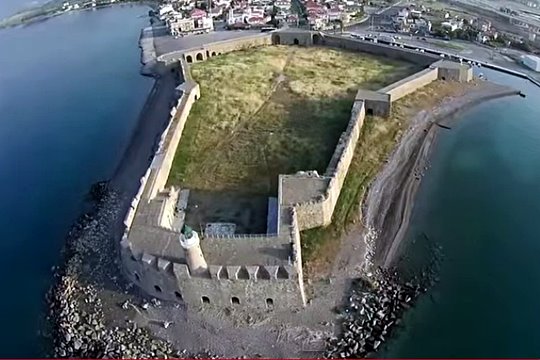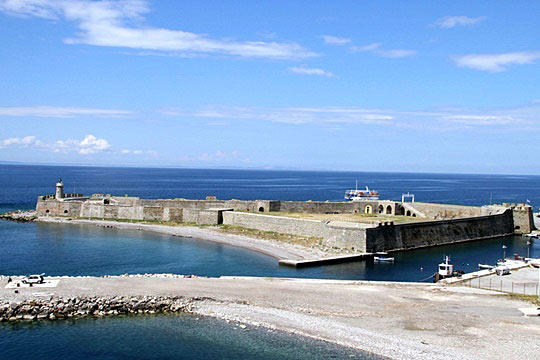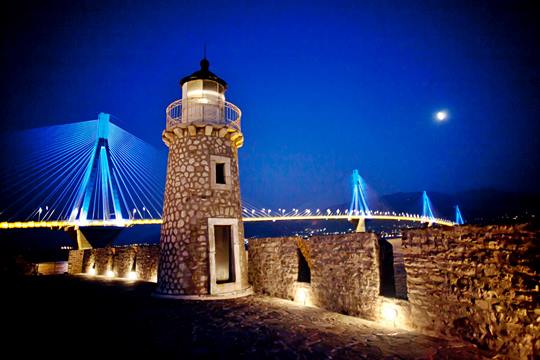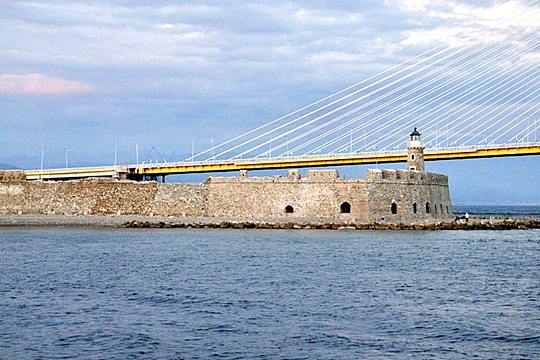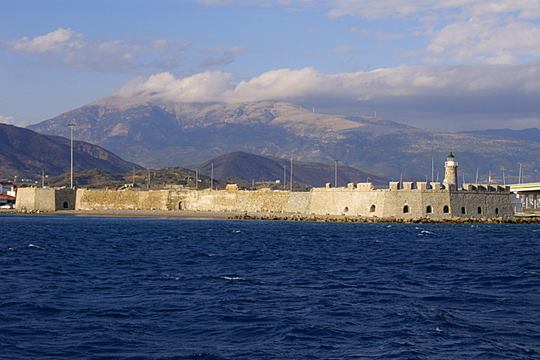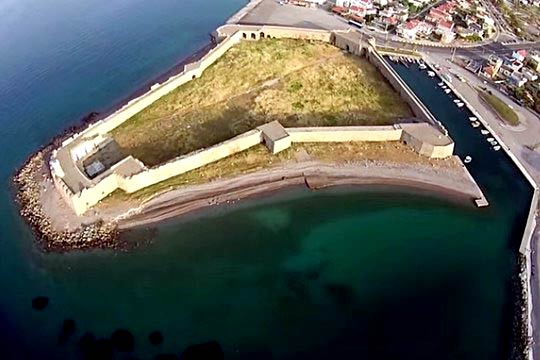Antirrio, Nafpaktos, Aetolia-Akarnania,West Greece
Antirrio Fortress
| Location: |
| Antirrio, under the bridge connecting NW Peloponnese to the mainland |
| Region > Prefecture: | 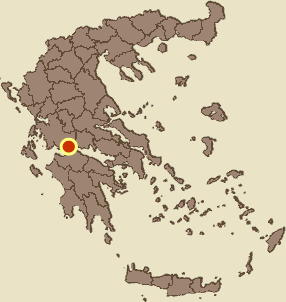 |
| West Greece Aetolia-Akarnania | |
| Municipality > Town: | |
| City of Nafpaktos • Antirrio | |
| Altitude: | |
| Zero Altitude |
| Time of Construction | Origin | |
| 1499 | OTTOMAN |
|
| Castle Type | Condition | |
| Coastal Fortress |
Relatively Good
|
The fortress of Antirrio is unedr the modern bridge of Rio-Antirrio, at the north side of the strait, next to the harbor that was used by the ferry boats before the construction of the bridge
History
Antirrio played an important role in the Byzantine and post Byzantine era due to its strategic position. Antirrio followed Nafpaktos’ fate, when it was surrendered in 1499 during the first year of the Venetian Turkish war.
It was then that Soultan Vagiatzit II realized the strategic significance of the «strait» and secured the entrance with the construction of two forts on both capes (Rio of Moria and Rio of Roumeli), on ancient foundations. The channel of Rion was named during the 17th century as Dardanelia of Nafpaktos, Antirrio was also named as Kasteli of Roumeli, while the opposite Rio Kasteli of Moria for their powerful position.
The fortress of Antirrion experienced several destructions and restorations. In 1532 it was besieged by the Genoese admiral Andrea Doria, who acted on behalf of the Hapsburg Emperor, Charles V. The Ottomans resisted at first, but then they retreated and blew the castle up.
The fortress was abandoned for about a year and then it was fortified again by the Ottomans in 1533. For that purpose artillery was brought over from Naupaktos. In 1543 the Ottoman admiral Hayreddin Barbarossa again transferred to the fortress heavy artillery from Naupaktos.
In 1603 the fortress was destroyed by the Maltese Knights and was rebuilt by the Ottomans, who, however, blew it up again when Francesco Morosini forced them to abandon it. Probably in the same year- and definitely at the beginning of the so-called Second Venetian Occupation- the fortress was re-designed and rebuilt by Venetian engineers. The Venetians controlled it until 1699 when it was ceded to the Ottomans following the Karlowitz peace treaty. In 1829 it was surrendered to the Greeks according to the treaty signed by Augustinos Capodistria, brother of the first governor of Greece.
Today, the medieval castle has been restored by the Ministry of Culture and it is used for cultural events during the summer months.
Structure, Fortification & Buildings
n its present-day form the fortress is a typical specimen of a sea-front fortress, mainly Venetian in style. Its plan is almost hexagonal with polygonal bulwarks on the corners. It is surrounded on three sides by sea and its northern side is protected by a flooded trench, which isolated it from the mainland. Some remains of fortifications discovered at a distance of about 600 meters towards Aetolia, namely a trench and a long wall, used to isolate the peninsula on which the fortress was built from the mainland.
The surviving fortress includes mainly the surrounding wall, which consists of rectilinear concrete walls, a peripheral corridor, successive ramparts and cannon loops facing the sea. A distinctive feature is the semi-circular cordone at the base of the parapet which runs along the exterior surface of the wall. The central gate of the fortress is located on its north side and leads to the interior via an arched corridor. The main testimonies about the castle are 17th century sources, relating that within the fortress of Antirrio there were more than 89 houses, a Muslim mosque dated in the time of Beyazid II, a small mescid (domed prayer house without minaret) dating from the period of Suleyman the Magnificent and a Turkish bath complex.
| First entry in Kastrologos: | August 2012 | Last addition of photo/video: | June 2015 |
Sources
- Website Municipality of Nafpaktos - Κάστρο Αντιρρίου (Greek only)
- Website Lepanto1571 - Fortress of Antirrion
- Andrew Sawyer’s website 'castles of Greece'- Antirio
|
|
| Access |
|---|
| Approach to the monument: |
| From the NR to/from Patra turn to enter in the village of Antirrio. The castle is at the port, under the bridge, and impossible to miss. |
| Entrance: |
| Free entrance. Limited hours. |



